February 25th , 2010

 covered by curtains of thin silvery water. Sounds great, too bad we missed it.
covered by curtains of thin silvery water. Sounds great, too bad we missed it.
The Maling Gorge was something I had been looking forward to since we had left Guilin. It offered an opportunity to spend the day outdoors hiking. The real treasure lays in its obscurity. It's not, by far, China's most famous gorge. It's also most likely not the most beautiful. It is, however, well worth the trip if you're in Guizhou. The walk down is mild, never to steep and completely manageable even by the most average of hikers. Apart from the glass elevator that Willy Wonka built along the cliff side, the gorge is completely unspoiled. As far as Chinese attractions go, it's incredably natural.
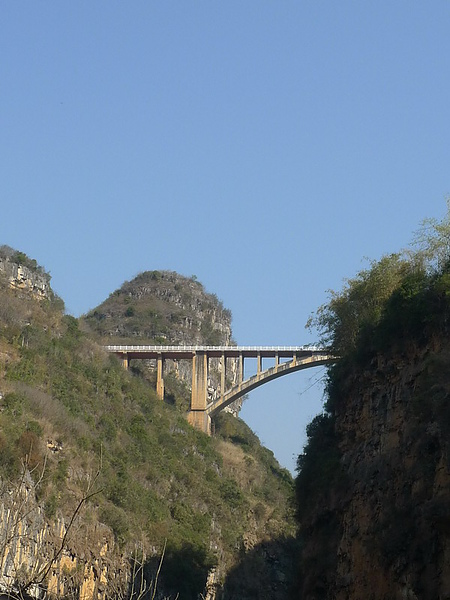
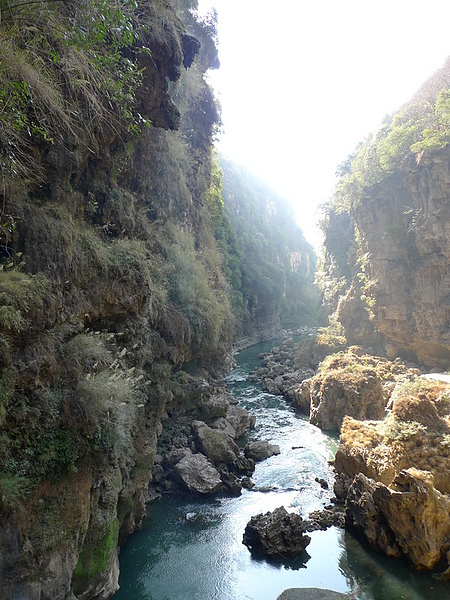
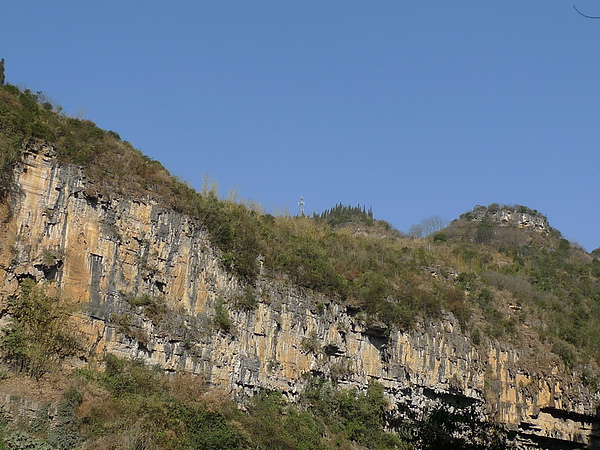
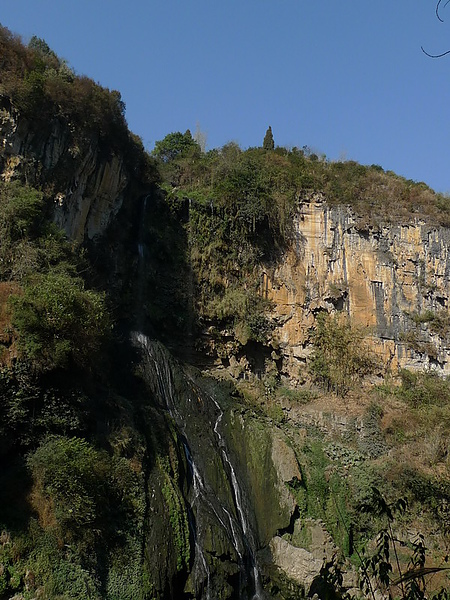
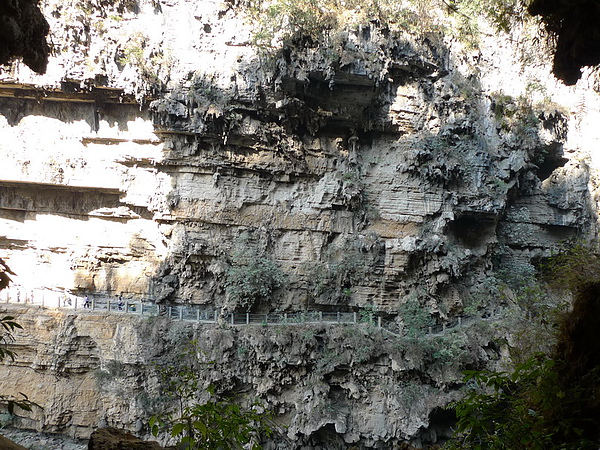
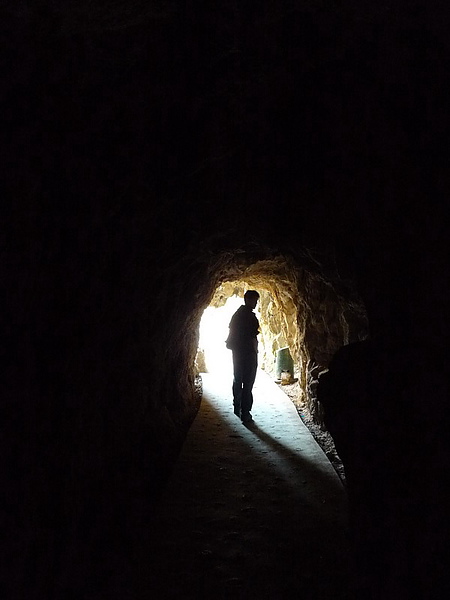
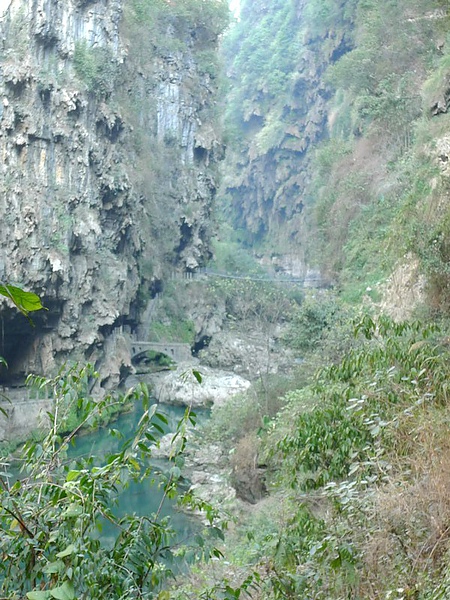
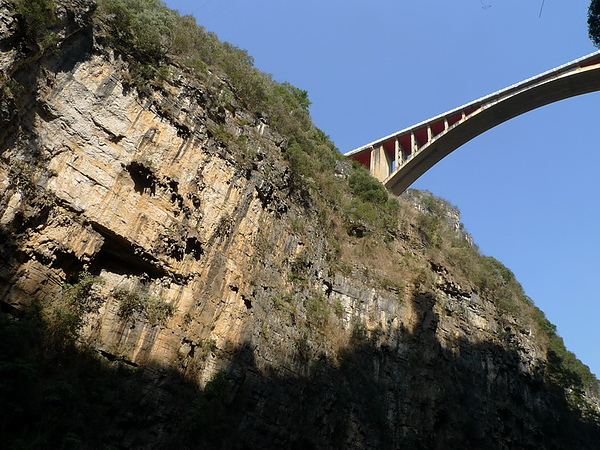
The geological formations along the walls of the gorge are quite curious. They look like awnings of rock jutting out where ever there is a waterfall; which during the wet season is about half of all wall space on the eastern side. Even when we were there, at the peak of the low season, there were at least 4 or 5 small waterfall cascading down the one hundred plus meter high wall. Apparently during the wet season the entire eastern wall is
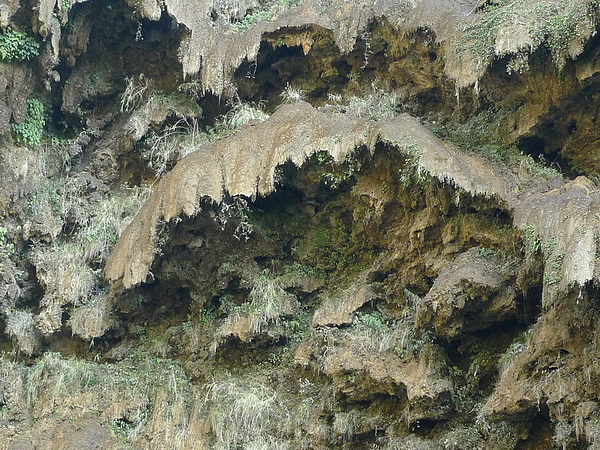
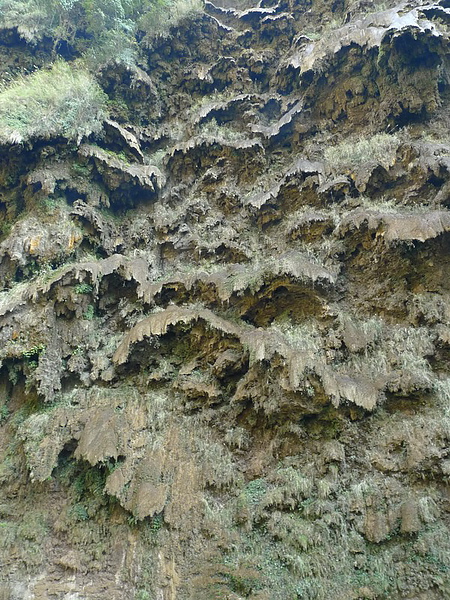
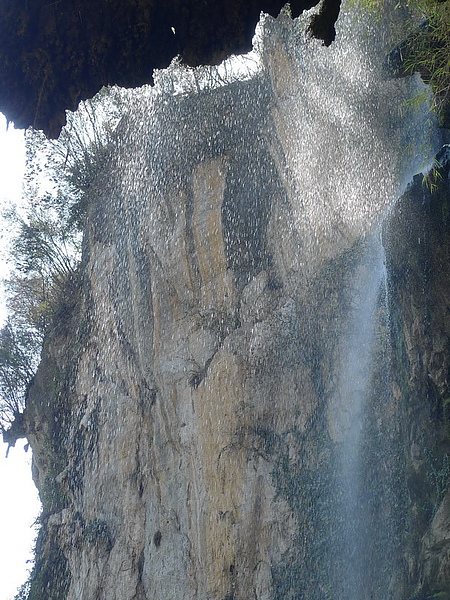
In spite of the low water volume, it was still nice to take our time at a relaxing pace. We spent the whole morning walking back and forth in the gorge, taking in the sunlight and the natural beauty of it. I even went out on a limb to tell Becky that I found it more impressive than Taroko Gorge in Hualien. Although at first this was a slap in the face to Taiwan's national treasure #1, Becky eventually conceded that in some respects (the absence of a road and tour buses) this place we much nicer than Taroko.
After eating a light lunch and hiking back up to the car park, we headed off in a bus back into town. Our goal was to catch another bus out to the 10,000 peak forest. It's a collection of, you guessed it, more karst peaks on the other side of town. While we made it back into Xing Yi with no problem, finding a bus station to take us in the right direction was a little bit more of a challenge. 
After wandering for a good 15 minutes we decided a cab would be the best bet, so we flagged one down. Remembering that just the day before we had hitched a ride across town for only 7 RMB, we thought this would be a relatively cheap option. As soon as we got in the cab the driver said, 'oh that place is REALLY far. I need at least 100 RMB.' We said, 'ok, forget it. Let us out.' The driver, though, insisted on dropping us off at the bus station and kept rolling until we insisted he let us out. Then he looked at me and said that's 5 yuan. In total, we had been taxied no more than 200m. The driver had refused to turn on the meter out of fear that then we would be able to get him to go to the 10,000 peak hills. Then he insisted that since flagfall was 5 yuan we should pay him 5 yuan. Needless to say we weren't impressed. However, being in an overall pleasant mood, I didn't want to argue the point. I muttered something to him in English as I gave him the 5 RMB and stepped out onto the bus station to get to the hills.
The bus ride out was just as pleasant as the one in the morning. It was a steady flow of full, empty, full, empty. Eventually we got out into the 'suburbs' of Xing Yi. These areas are all traditional houses surrounded by the greenest fields of rice I've ever seen. Once we arrived at the park we bought tickets and hopped into our over-sized golf cart. We were carted around along a road that over looked the hills in the distance. We had a lovely woman pointing out animal shapes on the mountains for us. She was apparently from the Bouyi tribe, but she looked more Taiwanese than any other person we had met so far. I may be mistaken but I don't think teal petty-coats are the traditional garb of Bouyi tribeswomen.
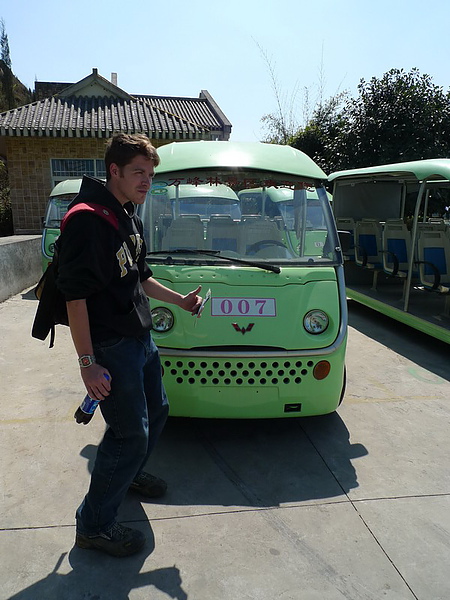
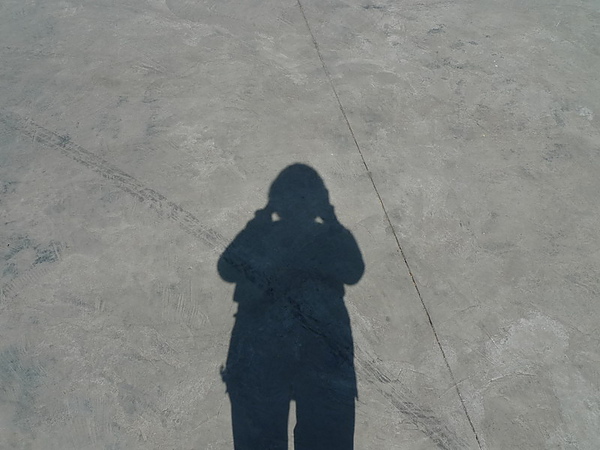
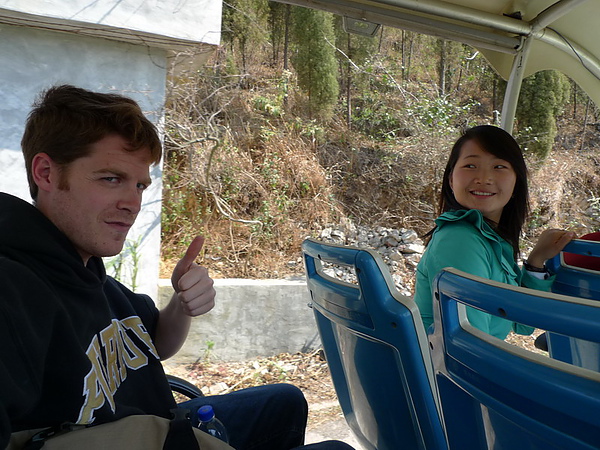
The real jewel of the visit was not the karst landscapes in the distance, which admittedly seemed to go on forever. On the contrary, the real beauty lay in the green fields immediately in front of the peaks. Like a vast green blanket spread out in front of 10,000 needles, the rice fields lay before us. It was amazing to see them arranged in circles around wells, and in patches like an old quilt. Additionally, the ride back to the visitors center was cool and breezy. In my mind, the perfect weather to be outside in.
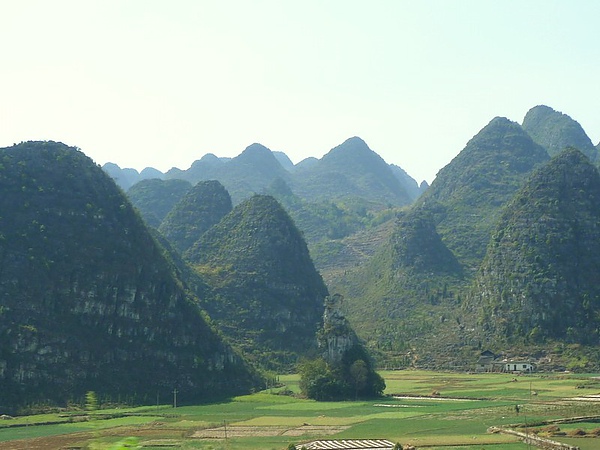
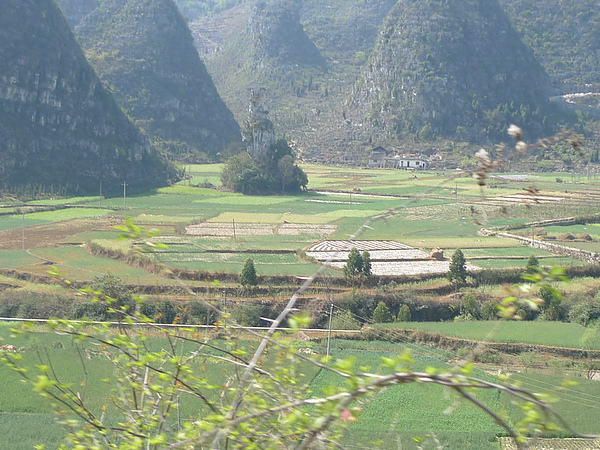
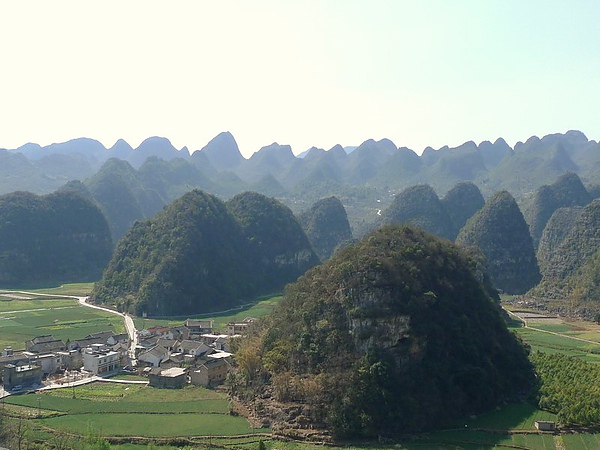
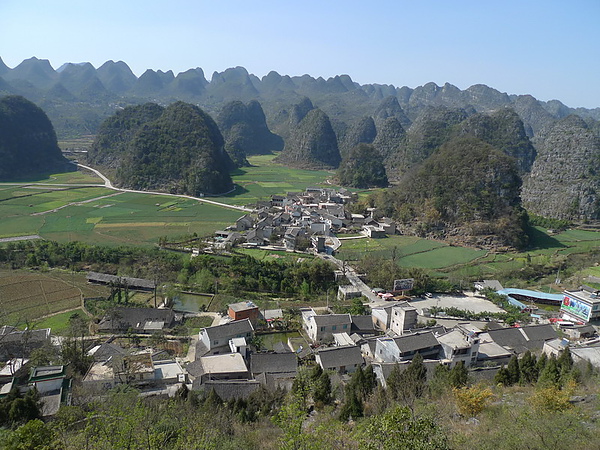
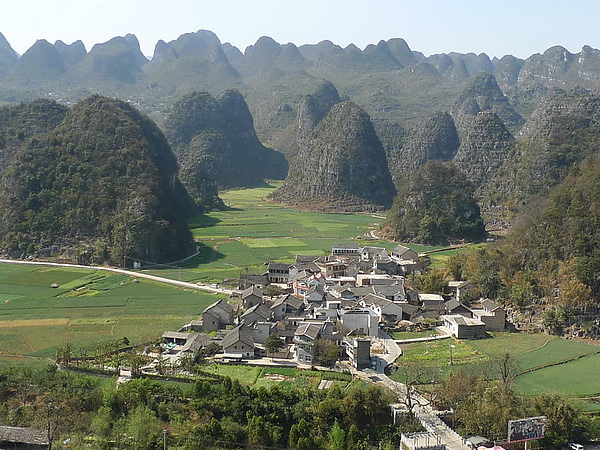
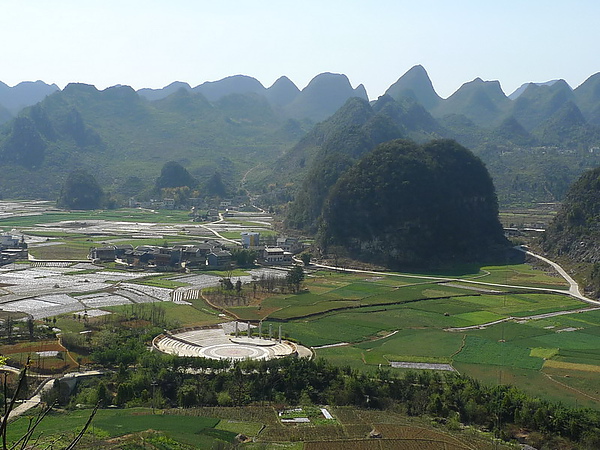
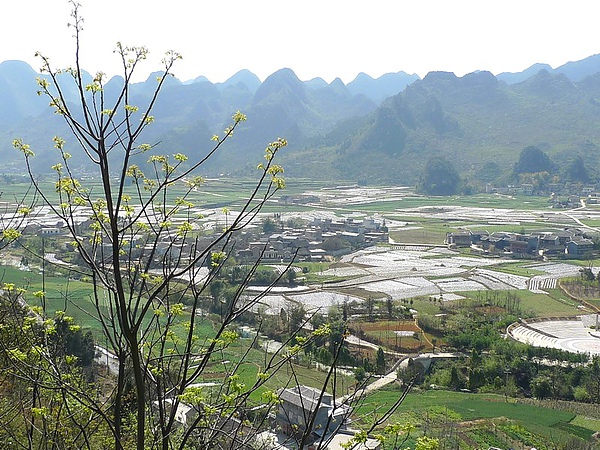
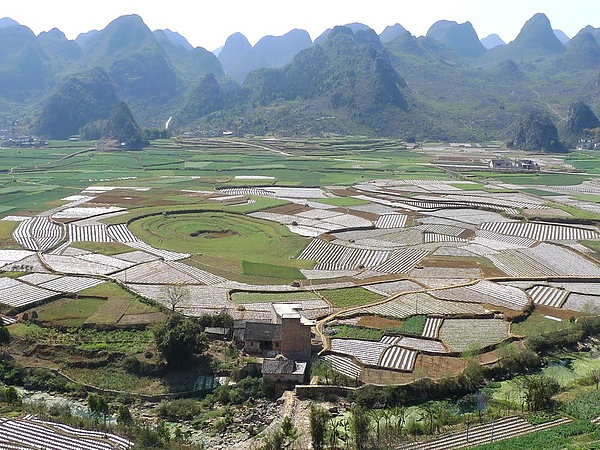
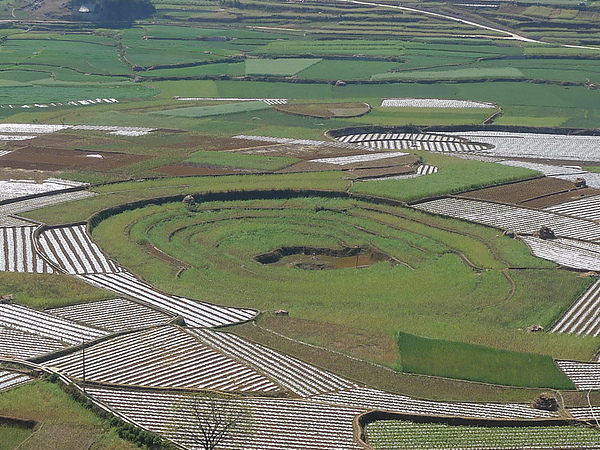
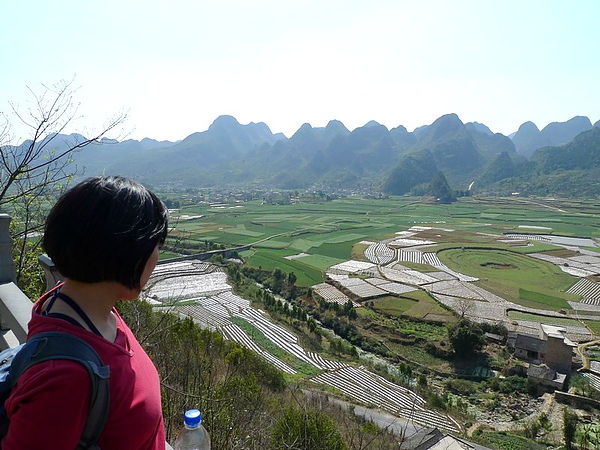
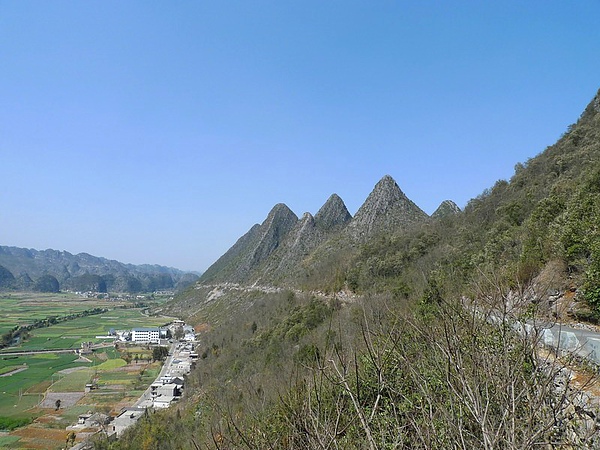
Fully satisfied with this leg of the trip we hitched a ride on the bus back into town. Along the way a man boarded the bus with a rucksack full of odds and ends. The rucksack was perfectly ordinary except for the chicken head sticking out of a hole torn in the bottom. As I looked at the chicken's head, feeling sorry for it, its eyes blinked at me and its head turned quizzically. Apparently chickens in China don't see many foreigners. We got off the bus about halfway into town in order to search for the third (and final) hotspot in XingYi: The minority marriage customs museum.
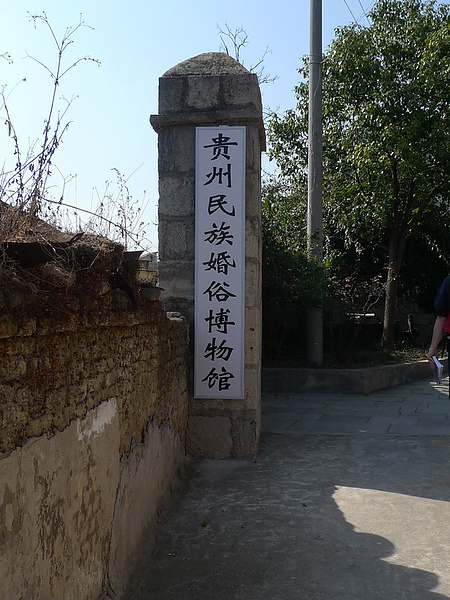
We were forced to wander around and ask directions numerous times before finally finding the museum. Set back into the winding back streets, the museum occupies the grounds of a former Qing dynasty mansion. Inside there are several displays, all captioned in Chinese, describing the various courting rituals of local minority tribes. Some, rather creepy, mannequins are dressed in traditional marriage outfits. While the museum itself was a little boring, apparently all the tribes use song and dance to attract spouses, the perfect weather made sure that nothing could bring our spirits down.
After a ride back into town, we headed into the same night market for dinner. Having been so impressed with the food the previous night, we sat down at another vendor for some dumplings. Becky ranted and raved about how perfect the skin of these dumplings was. I couldn't disagree. Becky then ordered some fire-hot noodles. Although I couldn't stand them for long, Becky finished one order and got another one to go. I walked to get my last mass order of Xin Jiang kebabs.
A walk back to the hotel on a perfect night, and a feeling of remorse for leaving the next day, was how we ended this third to last day in China. Although (nearly) everything on the trip had been amazing, I could tell that the length of the trip was starting to wear on some of my traveling companions. I could go on forever with traveling, being completely uprooted and never staying put. I understand, however, that most people want to go home at some point. I'm just glad that of all the things we saw, I was able to find something great about each of them.
Tomorrow: To Kunming.


 留言列表
留言列表
